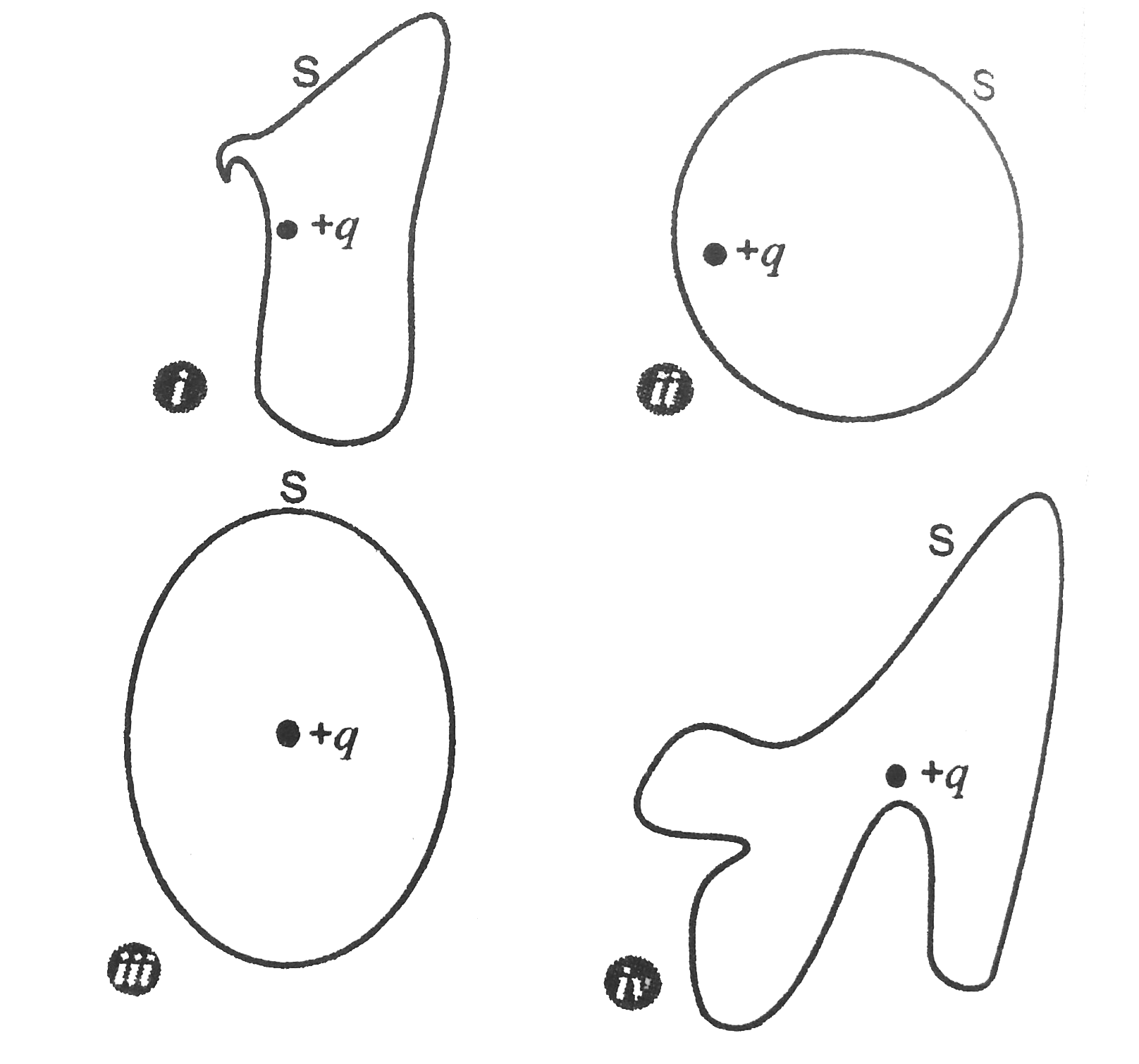Assertion : If a dipole is enclosed by a surface, then according to Gauss's law, electric flux linked with it will be zero.
Reason : The charge enclosed by a surface is zero.
If both Assertion and Reason are correct and Reason is the correct explanation of Assertion
If both Assertion and Reason are correct but Reason is not the correct explanation of Assertion
If Assertion is true but Reason is false
If Assertion is false but Reason is true
The correct Answer is:A
To solve the given question, we need to analyze the assertion and the reason provided in the context of Gauss's law.
1. Understanding Gauss's Law:
Gauss's law states that the electric flux (Φ_E) through a closed surface is proportional to the charge (Q_enclosed) enclosed within that surface. Mathematically, it is expressed as:
ΦE=Qenclosedϵ0
where ϵ0 is the permittivity of free space.
Hint: Remember that electric flux is related to the total charge enclosed by the surface.
2. Defining a Dipole:
A dipole consists of two equal and opposite charges, +Q and -Q, separated by a distance (d). When we consider a dipole enclosed by a Gaussian surface, we need to evaluate the total charge within that surface.
Hint: A dipole has two charges that cancel each other out.
3. Calculating Charge Enclosed:
When a dipole is enclosed by a surface, the total charge enclosed is:
Qenclosed=+Q+(−Q)=0
Therefore, the net charge inside the Gaussian surface is zero.
Hint: Always sum the charges to find the net charge enclosed.
4. Applying Gauss's Law:
Since the charge enclosed is zero, we can substitute this into Gauss's law:
ΦE=0ϵ0=0
This indicates that the electric flux linked with the dipole when enclosed by the surface is indeed zero.
Hint: Electric flux is directly dependent on the net charge enclosed.
5. Evaluating the Assertion and Reason:
- Assertion: "If a dipole is enclosed by a surface, then according to Gauss's law, electric flux linked with it will be zero." This is true.
- Reason: "The charge enclosed by a surface is zero." This is also true and correctly explains the assertion.
Hint: Check whether the reason logically supports the assertion.
6. Conclusion:
Both the assertion and reason are correct, and the reason is the correct explanation for the assertion. Therefore, the correct answer is that both the assertion and reason are true, and the reason is the correct explanation of the assertion.
Final Answer:
Both the assertion and reason are correct, and the reason is the correct explanation of the assertion.
Gauss's law states that the electric flux (Φ_E) through a closed surface is proportional to the charge (Q_enclosed) enclosed within that surface. Mathematically, it is expressed as:
ΦE=Qenclosedϵ0
where ϵ0 is the permittivity of free space.
A dipole consists of two equal and opposite charges, +Q and -Q, separated by a distance (d). When we consider a dipole enclosed by a Gaussian surface, we need to evaluate the total charge within that surface.
When a dipole is enclosed by a surface, the total charge enclosed is:
Qenclosed=+Q+(−Q)=0
Therefore, the net charge inside the Gaussian surface is zero.
Since the charge enclosed is zero, we can substitute this into Gauss's law:
ΦE=0ϵ0=0
This indicates that the electric flux linked with the dipole when enclosed by the surface is indeed zero.
- Assertion: "If a dipole is enclosed by a surface, then according to Gauss's law, electric flux linked with it will be zero." This is true.
- Reason: "The charge enclosed by a surface is zero." This is also true and correctly explains the assertion.
Both the assertion and reason are correct, and the reason is the correct explanation for the assertion. Therefore, the correct answer is that both the assertion and reason are true, and the reason is the correct explanation of the assertion.
Both the assertion and reason are correct, and the reason is the correct explanation of the assertion.
Topper's Solved these Questions
- ELECTROSTATICSBOOK - DC PANDEY ENGLISHCHAPTER - ELECTROSTATICSEXERCISE - Match the columns
5 Videos
- ELECTROSTATICSBOOK - DC PANDEY ENGLISHCHAPTER - ELECTROSTATICSEXERCISE - Medical entrances gallery
37 Videos
- ELECTROSTATICSBOOK - DC PANDEY ENGLISHCHAPTER - ELECTROSTATICSEXERCISE - Taking it together
105 Videos
- ELECTROSTATIC POTENTIAL AND CAPACITORSBOOK - DC PANDEY ENGLISHCHAPTER - ELECTROSTATIC POTENTIAL AND CAPACITORSEXERCISE - (C) Chapter exercises
50 Videos
- GRAVITATIONBOOK - DC PANDEY ENGLISHCHAPTER - GRAVITATIONEXERCISE - All Questions
135 Videos
Similar Questions
If a charge is enclosed by the surface of the sphere then total flux emitted from the surface will be:
View SolutionWhich of the following statement is correct ? If E = 0 , at all points of a closed surface.
a. the electirc flux through the surface is zero.
b. the total charge enclosed by the surface is zero.
View Solution
Knowledge Check
The surface considered for Gauss's law is called
AClosed surfaceBSphereical surfaceCGaussian surfaceDPlane surface
What is the nature of Gaussian surface involved in Gauss's law of electrostatics?
View SolutionIf the number of electric lines of force emerging out of a closed surfsace is 1000, then the charge enclosed by the surface is
View SolutionIf the flux of the electric field through a closed surface is zero,
View SolutionAssertion: In a region where uniform electric field exists, the net charge with in volume of any size is zero.
Reason: The electric flux within any closed surface in region of uniform electirc field is zero.
View SolutionAssertion : In a cavity within a conductor, the electric field is zero.
Reason : Charges in a conductor reside only at its surface.
View SolutionThe electric flux through the surface

View SolutionThe electric flux through the surface

View Solution
